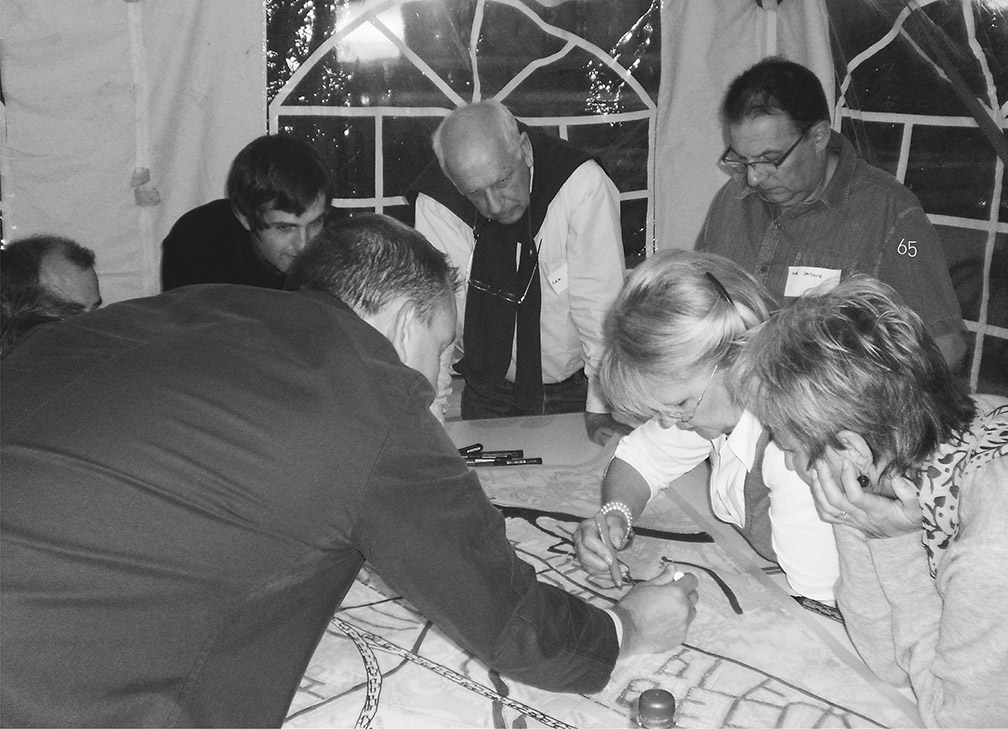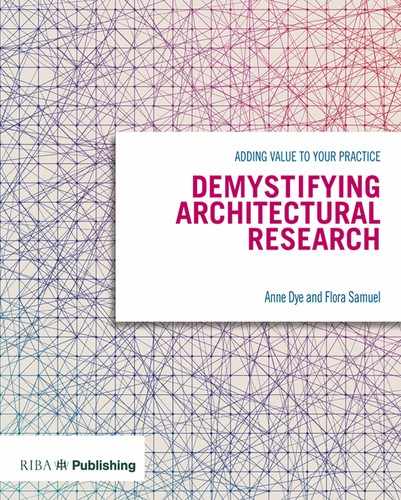Chapter 11
Visioning Brentford Lock West
CONTRIBUTOR PROFILE: JOHN SAMPSON
John Sampson is an urban designer and architect at URBED with over ten years’ professional experience. He has collaborated on a number of action research projects,1 ranging from developing community-led design solutions for low-carbon neighbourhoods through to best-practice guidance on parking provision.
Over a number of years the practice has invested in ‘design for change’,2 an engagement methodology aimed at allowing tenants to actively and meaningfully engage, communicate and co-design with architects. The process was originally developed out of URBED’s involvement with the Homes for Change housing cooperative in Manchester. We were later commissioned to formalise the process into a training course for the charity The Glass-House.
This has led to further opportunities to test and develop our engagement methodology. In recent years the most interesting opportunity to do this came from Brentford Lock West, where we were commissioned, based on our experience working with local communities, to co-design a scheme with a resistant local community.
Practice profile: URBED
Founded in 1975 and based in Manchester, URBED (URBanism, Environment and Design) is a small employee-owned cooperative. The practice has ten staff and associates, including urban planners, architects, an economist and a sustainability expert. The practice works in three main areas:
- Public-sector consultancy
- Master planning for developers and housebuilders
- Research, writing and advocacy, including policy reports for government, research for think tanks, and in-house publications and events
The practice undertakes research activities for two main reasons: first because of the pleasure that research – learning new things – brings and second because it has a history of bringing new work to the office. The practice uses knowledge and understanding gained from research to prepare them to work in a new field; it also helps them to target and develop new markets.
Context
Brentford Lock West is situated on the edge of Brentford town centre. The area is currently in a state of transition spearheaded by the local community, who vigorously and successfully campaigned against a previous high-density residential development on the site back in 2004. Following the planning refusal the client, ISIS Waterside Regeneration Ltd (then part of the Igloo Regeneration Fund group), organised a competition to appoint a new design team. Their brief set out an aspiration to develop an exemplar sustainable neighbourhood that would successfully integrate family housing into a viable scheme that celebrated the qualities of Brentford.
Following the design competition two of the entrants were asked to collaborate, and so a design team was formed consisting of URBED, Tovatt Architects & Planners, and Swedish master planner Klas Tham. Over the next 18 months of intensive involvement by ISIS and URBED the scheme was transformed into one that supported the regeneration of the town and had the broad support of the community.
Approach
Philosophy
URBED have a strong interest in engaging local people in the design process, which has led to the development of techniques such as ‘design for change’, used for the Brentford Lock West project.
Methods
The design process was one of collaboration with the local community. This started with workshops run over two evenings at the start of the process in a local cafe. Residents and stakeholders from the area used the first session to develop a shared understanding of the area today. The second evening focused on generating a number of different options for the site, using collage and plasticine models.
These models were then drawn up by the design team and presented back to the community at a public consultation event to help the design team focus on a preferred development framework. Following feedback from this event, an emerging development framework was drawn up. This was then tested and developed further by the design team, and shared with the community through regular update events and exhibitions. In total seven engagement events were held, in addition to which ISIS regularly presented progress to local boards and panels throughout the 18 months it took to develop the scheme. Findings from the research were published on the URBED website,3 and formed part of the planning application for the development.
Insights and Impact
This process was essential in re-engaging a previously mistrustful local community, and many of the people who participated in the design workshops had been actively involved in the campaign against the previous application. The scheme that embodied the findings from the consultation process was granted outline planning in March 2011. The planning committee praised ISIS for their meaningful involvement of the local community in the development process, something that is a model for developer-led engagement under the localism agenda.
Before commencing the public engagement we were aware that it was essential that the expectations of both the community and the developer were clearly established at each stage of the process. In running design workshops it was important that ISIS took on board the comments of the local residents, while the community acknowledged ISIS’s need as a developer to design a commercially viable project. With these criteria clearly set out, the engagement process resulted in a scheme that the local community feels a sense of ownership over. With localism becoming more embedded within the planning system, this project demonstrates that community engagement can be beneficial for both the client and the local community.
Lessons
A number of lessons came from the project, which will inform the practice’s future work:
- Working so closely and intensively with the residents who had originally opposed the scheme meant that we were able to understand their concerns and aspirations. At the same time the residents were able to gain a greater understanding of the developer’s requirements for the site. Building this kind of joint understanding takes time and resources. The value created through this process far outweighs the additional cost to the client of undertaking this additional engagement.
- Developing the ‘design for change’ methodology as a tool has provided us with a tangible asset that we can market.
- Finally, the success of Brentford Lock West has led to significant further commissions by Igloo to work on sites across the country.
Designing in public: engaged local residents in Brentford analysing the local area as part of the ‘design for change’ process
